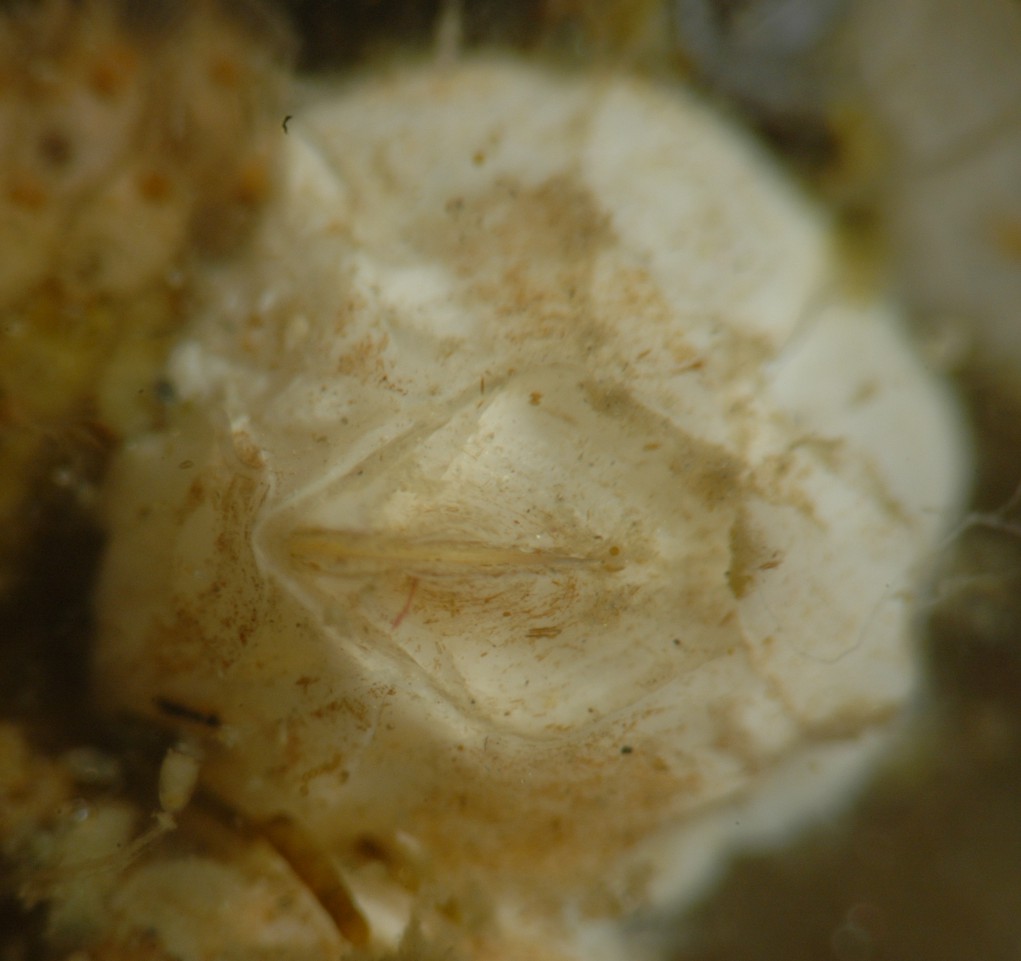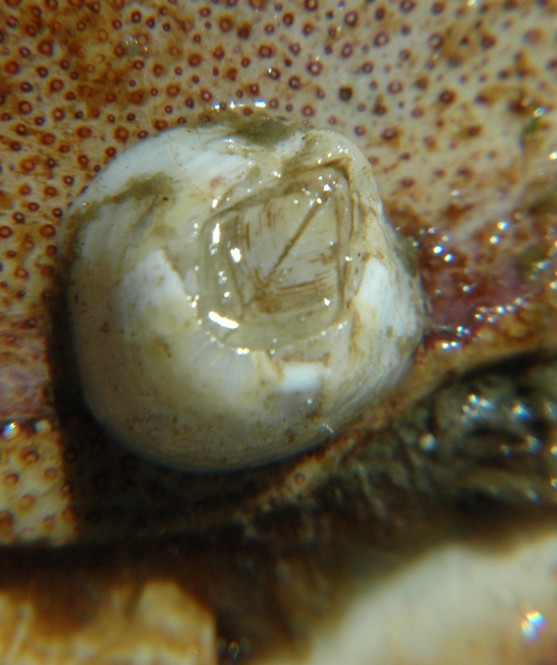Balanus crenatus Bruguiere, 1789Common name(s): Crenate barnacle |
|
| Synonyms: |  |
| Phylum Arthropoda
Subphylum Crustacea Class Maxillopoda Subclass Thecostraca Infraclass Cirripedia Superorder Thoracica Order Sessilia Suborder Balanomorpha Superfamily Balanoidea Family Balanidae |
|
| Balanus crenatus living on a bottle
collected at 18 m depth,
Whidbey Island, WA.
About 1/2 cm in diameter. |
|
| (Photo by: Dave Cowles July 2006) | |
How to Distinguish from Similar Species: This barnacle is usually whiter than are Balanus glandula or Semibalanus cariosus. It also generally has smoother plates, and does not have the "thatch" appearance of S. cariosus. It has not "beak" on the tips of the terga, as does S. cariosus, and the sutures between the terga and scutum are not strongly looped as they are in B. glandula.
Geographical Range: Around the north Pacific rim from northern Japan to Santa Barbara, CA; also in the North Atlantic.
Depth Range: Intertidal to 182 m
Habitat: Mostly subtidal, some intertidal on smooth rocks (intertidal species are mostly on the underside of smooth rocks). Avoids highly brackish water. May foul ship bottoms and docks, crab carapaces, mussel shells, bottles, wood, kelp, and plate limpets, and may be found in estuaries.
Biology/Natural History: This species is more common subtidally in the Pacific Northwest than farther south in areas like Monterey Bay. On the east coast of North America, the migration behavior of its larvae serves to make it especially abundant in estuaries. The earliest naupliar stages are found high in the water column and so move outward in the estuary with the fresh water outflow. Later stages swim deeper and are carried back into the estuary, where they settle. In Monterey Bay this species settles sporadically almost year round. It can grow to 2 cm diameter in 1 year. Usually they grow wide, but when crowded can grow tall and narrow. Predators include seastars such as Evasterias troschelii.
| Return to: | |||
| Main Page | Alphabetic Index | Systematic Index | Glossary |
References:
Dichotomous Keys:Flora and Fairbanks, 1966
Kozloff 1987, 1996
Smith and Carlton, 1975
General References:
Johnson
and Snook, 1955
Kozloff,
1993
Morris
et al., 1980
O'Clair
and O'Clair, 1998
Scientific Articles:
Web sites:
General Notes and Observations: Locations, abundances, unusual behaviors:

This 1 cm individual is living on the carapace of Cancer
magister.
Authors and Editors of Page:
Dave Cowles (2006): Created original page